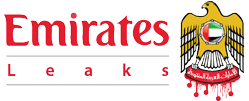Observers unanimously agree that the ruling regime in the UAE is exercising outright deception against its ally, the Kingdom of Saudi Arabia, concerning strengthening its relations with Iran.
The data show that the UAE’s allegations that it entered the Saudi alliance for the war on Yemen and targeting the Iranian tide was a lie.
As the true goal of the Emirati regime has been related to the search for ports and the exploitation of the power vacuum to form a militia affiliated to it.
Observers agree that whoever confronts Iran does not keep their ambassador, and should not keep security cooperination with it, nor remains its primary economic artery.
The American newspaper “New York Times” revealed that the UAE had secret negotiations with Iran last year, without informing the United States on this.
The newspaper, quoting officials in the United States, Iran and countries in the Middle East, said that the negotiations in which senior Iranian officials participated took place in late September in Abu Dhabi, in an effort by the UAE to reach a separate peace agreement with the Islamic Republic and avoid a round of violence that would undermine its efforts that has persisted for years to present itself as a focus of stability in the troubled region.
The newspaper pointed out that these negotiations took place against the backdrop of questions raised by some US allies in the region about the extent of the commitment of the US President Donald Trump to protect them, in light of the way Washington deals with a series of attacks attributed to Iran, including targeting commercial carriers in the Gulf of Oman and bombing two factories for Saudi Aramco in September.
The newspaper quoted US and Western officials as their conclusion, that the UAE launched these negotiations after it concluded that it does not have great confidence in Washington’s approach to Iran and can itself play a unique role in easing regional tensions.
The newspaper stated that Saudi Arabia, in its turn, had begun to study the possibility of achieving a “diplomatic breakthrough” with Iran through Iraqi and Pakistani mediation.
And the “New York Times” quoted Iranian diplomats and elements of the Revolutionary Guards as saying that the commander of the “Quds Force” General Qassem Soleimani (who was assassinated by the United States in early January in Baghdad) played a “role behind the scenes” in organizing consultations with both Gulf states.
The newspaper pointed out that the Emirati-Iranian negotiations that the Trump administration learned about from intelligence reports only raised great concern in the White House, where members of the National Security Council met in order to discuss the consequences of this development, which reflected the fragility of the front that Trump worked more than two years ago to establish against Iran.
The newspaper, quoting an intelligence official in the Middle East, said that the head of the Israeli “Mossad”, Yossi Cohen, confirmed to the US Secretary of State, Mike Pompeo, during the latter’s visit last October to the headquarters of the intelligence agency near Tel Aviv, that Iran had succeeded in achieving its main goal of breaking up the alliance.
International policymakers are closely watching the Emirates’ trips to Iran, leaving Saudi Arabia in Yemen and other parts of the Middle East – as differences between the two countries intensify. But the Emiratis, as usual, in the “darkness” without clarification, neither to restore relations nor for reasons that cut them.
In mid-October, Iranian President Hassan Rouhani spoke of the improvement of relations between his country and the UAE. Rouhani said that Iran and the UAE exchanged delegations and visits recently, noting that Emirati delegations and officials visited Iran recently, stressing that the relations between the two countries are heading towards more improvement.
The beginning that all showed this was in July 2019 when an Emirati military delegation visited the capital, Tehran, which was explained by a good relationship in a turbulent ocean after targeting tankers in the Arabian Gulf waters off Fujairah, and Abu Dhabi refused to accuse Tehran of involvement in those attacks. While Saudi Arabia, the United States and Britain directly accused the Revolutionary Guards of involvement in the attacks.
Iranian speakers confirmed from July to October 2019 that the visits between the two countries continued, and the British Middle East Eye website reported that the UAE National Security Adviser Tahnoon bin Zayed Al Nahyan visited Tehran, in an unannounced visit that continued More than 48 hours. Tehran later denied this without permission from the UAE government.
These visits culminated in the UAE’s release of $700 million of Iranian funds frozen in the country. And the ISNA news agency reported that the UAE is trying to improve its relationship from the military and security level to the political and diplomatic level, and also indicated that Abu Dhabi is seeking to “clear” tensions with Iran.
As evidence of improved relations, data and documents revealed that Iran’s oil exports rose to their highest levels (500,000 barrels per day) in August, since the imposition of US sanctions on Tehran, and that almost half of these exports were towards the UAE.
What prompted the UAE’s decision to send these delegations to Iran? What is the effect of the return of relations between Tehran and Abu Dhabi on the relationship with Saudi Arabia?! How did the authorities manage this issue with Emirati society?!
It seems that the UAE is seeking to conduct a dialogue with Iran to better manage the risks of a major conflict in the Persian Gulf, which would have very dire effects on the economic and security interests of the UAE.
In early 2016, the UAE (unlike Saudi Arabia, Bahrain, and Sudan) did not only cut ties with Iran, it only reduced them.
By achieving this balance, the UAE has kept its embassy in Tehran open while Dubai has continued to welcome Iranian tourists over the past three and a half years.



